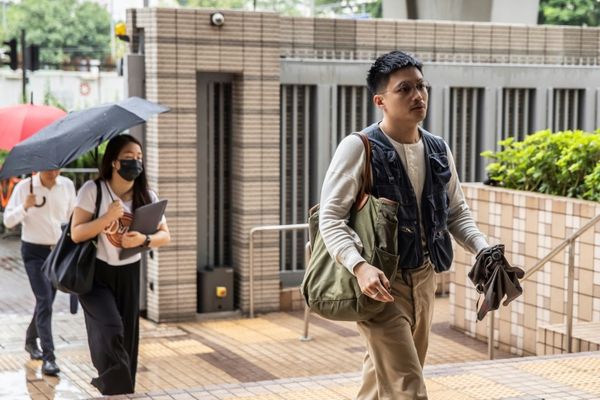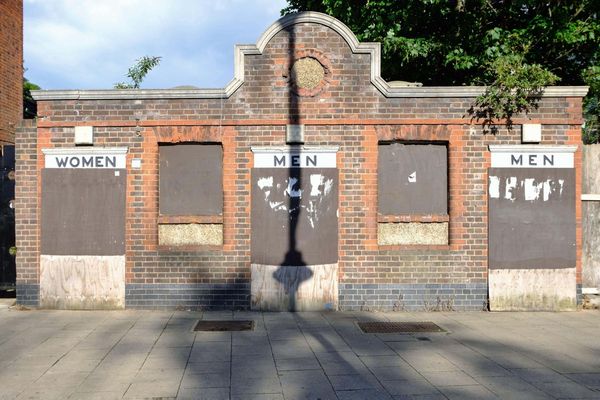A tangible legacy of the Sydney Olympic Games can be found overlooking an idyllic Queensland beach — and some say it should provide inspiration for Brisbane 2032 organisers.
Twelve two-bedroom, one-bath, 57-square-metre spa-equipped villas from Sydney 2000 have been a getaway for visitors to Philippa Thompson's caravan park at Rainbow Beach, north of the Sunshine Coast.
Ms Thompson said after accommodating thousands of holiday-makers over 21 years, they remain in good working condition and have only needed occasional updating and additions, and work on wear and tear.
The pre-fabricated buildings were sent to various locations across the country and the athlete's village at Newington in Sydney was converted into apartments. The whole area turned into a new residential community.
Ten years out from hosting the Olympic and Paralympic Games, architects say the village that will house most of the more than 23,000 athletes and officials coming in 2032 could leave a similar legacy in Queensland.
The future Olympic city is already grappling with a growing housing shortage and there are about 31,000 households on the social housing register.
Ms Thompson said the units from the Sydney Games proved to be a "lifesaver" for those caught out by pandemic-enforced border closures and could easily be repurposed as social housing, courtesy of their modular design.
"They are big enough for a family of four," she said.
"I would have thought something [of] that design makes it very easy [to be repurposed for housing] because they can be lined up side-by-side. It can be nicely organised so that … they slot in together."
What's planned for Brisbane Olympic village legacy?
The state government is expecting more than $500 million in private investment to develop a 40-hectare parcel for the Olympic village on Economic Development Queensland (EDQ)-owned land at Hamilton, in Brisbane's inner north.
Deputy Premier and Minister Assisting the Premier on Olympics Infrastructure Steven Miles last year said the "legacy of the village precinct is already incredibly important".
The government said it wanted the Olympic Games to "accelerate delivery of existing long-term plans" on the Northshore Hamilton area and the development plan for the area would be amended to deliver "new residential, commercial, retail and mixed-use development opportunities".
But unlike the Sydney Games, there are currently no plans to use modular or relocatable housing.
The proposed Development Scheme for the Olympic Village precinct nominates at least 5 per cent of the Priority Development Area (PDA) will be devoted to public, social, and affordable housing.
A minimum of 10 per cent of the total residential dwellings will have three or more bedrooms.
The Olympic bid also outlined plans for smaller athletes' villages at Robina on the Gold Coast and Maroochydore on the Sunshine Coast, accommodating 2,600 and 1,400 athletes and officials, respectively.
'A key role' for mobile dwellings
Award-winning Brisbane architect John Ellway said the government definition of what modern "successful communities" are may "not be the best metrics".
"Taller towers can be glamorous and provide for amazing real estate imagery, but I would argue that they do not encourage communities to establish long term," he said.
"You become detached from the ground … and are less likely to engage with that wider community. There is an opportunity here to build in a much denser way than our current suburbs, but manage the height maxing out."
Dan Burnett, a Brisbane-based architect with a modular housing company, agreed with Mr Ellway that a mix of low-rise permanent buildings and relocatable housing had the potential to meet housing requirements after the Olympics.
Mr Burnett said the athletes village precinct was a "rare opportunity".
"To design innovative housing modules which are both better suited to the demands of the athletes' village and a more viable solution for low-cost housing after the Games than traditional high-rise apartments," he said.
"These designs would offer adaptable, small-scale floor plans which provide a balance of privacy and interaction with other residents in the community and a strong connection to landscape.
"This modular design could be applied to three-storey detached or terraced houses with individual gardens or as more densely stacked dwellings up to five or six storeys."
Brisbane will continue to grow
The 2021 Census revealed there were 5.2 million Queensland residents — up from 4.7 million in 2016.
Aude Bernard, a migration and population researcher at the University of Queensland, said Brisbane's population would continue to grow and its interstate migration rate "will almost certainly remain positive".
Urban and social planner Stephanie Wyeth said as lifestyles of contemporary families changed, different housing types were needed to meet their changing requirement.
"There is great potential for well-designed, climate-responsive prefabricated housing," Ms Wyeth said.
As for relocatable housing, she said "it will come down to smart planning, design and construction" for it to work in a range of sites as a permanent solution.
Mr Burnett said it currently costs $50,000 to move a three-bedroom, two-bathroom modular house and while there were no known models of large-scale developments in Australia that used relocatable houses, units could be built with designs "indistinguishable from traditional in-site construction".







